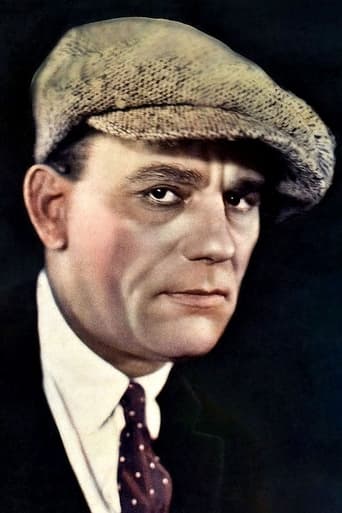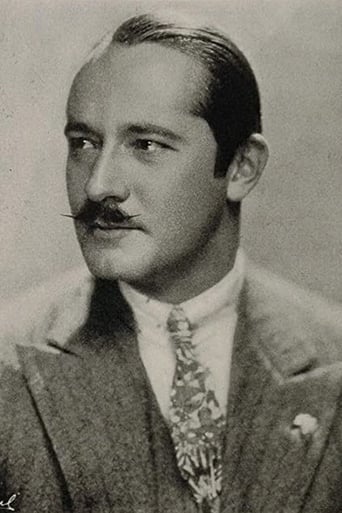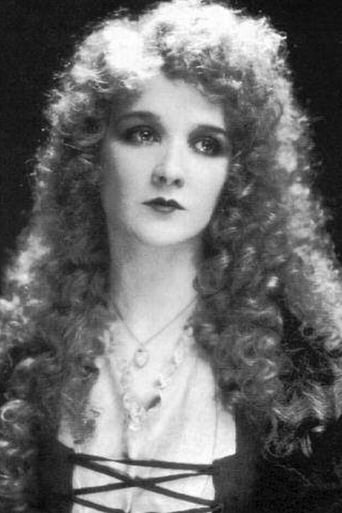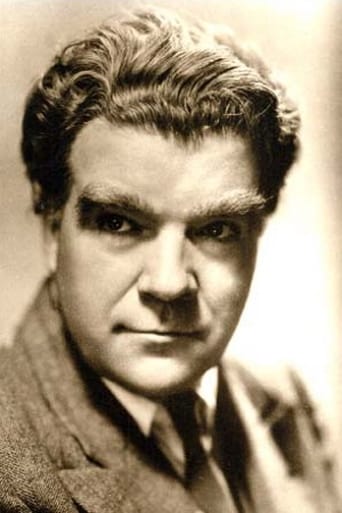Moustroll
Good movie but grossly overrated
ChicRawIdol
A brilliant film that helped define a genre
Erica Derrick
By the time the dramatic fireworks start popping off, each one feels earned.
Raymond Sierra
The film may be flawed, but its message is not.
Hitchcoc
We all know the story. The Phantom haunts the Paris Opera House. He is in love with the beautiful soprano, Christine. Because of his disfigurement, he demands to run the company, putting his "protege" in important roles. He is also in love with her. When he is unhappy, he becomes a killer. He kidnaps Christine and takes her to his place in the sewers. Of course, in 1925, his unmasking caused people to faint in the theater. It is a great moment of suspense topped off by his disfigured face. Even though the copies we have of this are not great, it is still stunning to see that famous scene. Some have criticize the change in plot from Gaston Leroux's novel, but it doesn't matter. Very well done silent masterpiece.
Rainey Dawn
Awesome, just awesome. I cannot say for sure if I saw this film in it's entirety but I can say I saw the movie. Rumors say the movie is not complete and that is most likely true but there isn't much that is missing from what I can tell - it is about 1 1/2 hours long. And from what I saw of the motion picture is a true Gothic horror film. This movie really does shine - it is a pure horror gem.They do not make movies like this anymore and this timeless masterpiece should be well preserved for future generations to come.If you like this movie - then you should try to find and watch 'London After Midnight' and 'The Hunchback of Notre Dame' both starring the incredible Lon Chaney, Sr.9/10
theblackscythe
(Halloween Horror Reviews #6)This film has one of the most disastrous production history's I can think for a horror film. Allegadly at one time at least 3 versions of the film existed, each with different scenes, tones and endings. However today only one version exists, luckily it is all we need.Lon Chaney as the Phantom is astonishing. With the bare visual essentials he is able to chill, excite and entertain better than any other rendition of the character since. He brings a sympathetic weight that many would not immediately think of in reference to the story, and he offers an outlook on deformity and loneliness witch strikes a cord even today, 89 years later. It is hard to discuss the make-up, because it is so perfect and deeply integrated into the film's effect. Chaney looks like a demon, and his jerky movements transform him into a living gargoyle on screen. The film deserves it's rating for the wonderfully shocking and perfectly built up unmasking sequence.Aside from Lon Chaney, the set design is sumptuous and highly impressive for the time. One of the better examples of a large scale period piece being attempted in the 1920's (possibly due to the adoption of some German expressionist techniques and ideas in the set design). This lavish set design is particularly prominent during the colour sequence, a dazzling and highly enjoyable barrage of Technicolour and macabre imagery. However this effect is ruined somewhat when we later see the same setting in black & white, diminishing the dreamlike and magical quality of the scene. The other actors are solid also, however Mary Philbin's stereotypical damsel in distress can become granting after a while.Although it may be unfair to comment on the score, because it was added after the film's original release, however it is breathtaking. I would honestly declare it a masterpiece of a score and a massive part of the film's effect is derived from it flowing between daunting organ pieces, to ambient percussion, and then to iconic orchestra bombast. Although I do not wish to undersell the film overall, I will admit that 90% of the film's power comes from the following four elements alone:1. Lon Chaney as the Phantom. 2. The musical score. 3. The colour sequence. 4. The exciting and emotional ending.This is possibly to the film's detriment, as long stretches can drag a bit and other elements are pushed aside in one's memory after seeing the film.Overall I loved this creepy little gem. Although much of the Phantom is lost to the mist of history, the shadow that remains is ghoulish enough to remain a classic of the silent age.
Lachlan J McDougall
The Phantom Of The Opera has long been a staple in the classic horror movie circles, and for good reason. The film is not short on any spectacle, the plot and pacing keep the viewer riveted to the screen for the entire duration, and as always Lon Chaney is on top form in his horrific role as The titular Phantom. The real interest to be derived from this film in the modern day and age where spectacle is certainly not lacking, however, comes from the many conundrums that it produces within the savvy film-goer.The film is by no means a masterpiece of art; it fits very squarely in the Hollywood tradition of narrative structure and shooting style built around the desire for easily digestible entertainment and profit. A ghostly phantom haunts the forgotten passages and torture chambers beneath the Paris opera house and abducts a beautiful young singer (Mary Philbin) to force his love upon her, leaving her to be saved by her one true love (Norman Kerry). You would be hard pressed to find a story which asks less mental activity from the viewer.But, while this holds true, the direction of the piece contains a mode of art which is not readily apparent with a surface viewing. Yes, Chaney's camp flailing adorned, as he is in mask and cape, is thrilling and more than a little humorous, but his eerily understated presence in the colour tinted masked-ball scene shows a much deeper understanding of the form. Likewise do the unexplained plot leaps and shocking make-up close-ups point to a schlock sensibility while at the same time the expressionist shadows creeping along the claustrophobic corridors of the Phantom's lair make a viewer think of the works of Murnau or Lang.The Phantom Of the Opera presents itself as the most intelligent of nonsense films or, contrariwise, as the stupidest of artistic visions simultaneously, and this, I believe, is one of the reasons that this movie remains so interesting today. I mean, plenty of silent horror films were made during this period (many of them, like Phantom, made by Universal Studios), but for some reason this is the one that has gone down through history and ingrained itself into the popular consciousness. The question mus be asked, "why is this? Why do I know this movie so well instead of others?" and it is the artistic flair mixed in with the highest camp of the horror genre that provides the answer.One instinctively rolls their metaphorical eyes at the ludicrousness of the japes and capers taking place before them, but their eyes cannot help but be drawn into the immense beauty and skill that has gone into each and every shot. It is aesthetically thrilling and intriguing as it is daft and hammy, and this is what makes the films as a whole so incredibly interesting.I suppose this may be a mere symptom of becoming too deeply entrenched in film studies and that my mind is just being drawn towards unnecessary dissection, but I would argue against this. Either way I would highly recommend seeing The Phantom Of The Opera in order to make up your own mind about its value artistic or otherwise.







